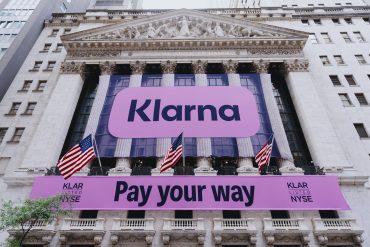
- Blockchain
- Cross-Border Payments
- Fintech
SWIFT Partners with Global Banks to Launch Blockchain Network
5 minute read

Global banking network SWIFT launches blockchain payment system to enable instant cross-border transactions for financial institutions worldwide
Key Takeaways
- SWIFT partners with 30+ banks on blockchain ledger – Major financial institutions including JPMorgan, HSBC, and Deutsche Bank collaborate with SWIFT and Consensys to develop a blockchain-based system for real-time cross-border payments
- 24/7 instant settlement capability targets $150 trillion market – The new ledger promises to eliminate traditional delays and high costs in international transactions through smart contracts and distributed ledger technology
- Digital euro deployment within four years – Deutsche Bundesbank President Joachim Nagel announces timeline for digital euro implementation as part of Europe’s digital finance sovereignty strategy
Introduction
SWIFT unveils its most significant strategic transformation since the 1970s with a blockchain-based ledger designed to revolutionize cross-border payments. The announcement at Sibos 2025 in Frankfurt represents a fundamental shift from SWIFT’s traditional role as a messaging network to an active facilitator of digital value transfer.
More than 30 global banks, including JPMorgan, HSBC, Deutsche Bank, and Bank of America, join forces with SWIFT and blockchain firm Consensys to develop this shared digital infrastructure. The initiative directly addresses longstanding inefficiencies in international payments, promising real-time settlement, reduced costs, and enhanced transparency across the global financial ecosystem.
Key Developments
The blockchain ledger operates as a secure, real-time record of transactions between participating financial institutions. Smart contracts automate the recording, sequencing, validation, and enforcement of transaction rules, eliminating manual intervention that traditionally slows cross-border payments.
SWIFT Chair Graeme Munro emphasizes the critical need for financial institutions to adapt to emerging technologies while maintaining security and compliance standards. This strategic evolution extends SWIFT’s capabilities beyond secure messaging into direct transaction processing and validation.
The project leverages Consensys’ Ethereum technology and experiments with the Linea Layer 2 solution to deliver faster, more cost-effective transactions. The system supports both existing and emerging payment infrastructures, including regulated tokenized value such as stablecoins and central bank digital currencies.

Market Impact
The European DLT network referenced in the project has already processed over €600 million across more than 40 transactions, demonstrating early market traction. Financial institutions across 16 countries provide feedback on the ledger’s design, ensuring alignment with regulatory frameworks critical for mainstream adoption.
SWIFT CEO Javier Pérez-Tasso highlights the rapid growth in cross-border payments demand, driven by technologies including artificial intelligence, quantum computing, and stablecoins. The 24/7 availability of the new ledger addresses growing consumer expectations for instant, global payment capabilities.
Banks participating in the consortium stand to benefit from reduced operational costs and liquidity requirements. The automation of compliance and reconciliation processes through smart contracts promises significant efficiency gains compared to traditional correspondent banking relationships.
Strategic Insights
This initiative positions SWIFT defensively against fintech disruptors and blockchain-native payment networks that threaten its dominant market position. The collaboration validates blockchain technology’s evolution from proof-of-concept to large-scale, real-world deployment in traditional finance.
Deutsche Bank CEO Christian Sewing addresses transformative industry shifts, advocating for collaborative approaches between financial institutions and fintechs. He identifies artificial intelligence as a key force requiring new risk management frameworks and regulatory adaptation.
The project enables movement of tokenized assets including funds and securities, creating opportunities for new financial products and enhanced capital market liquidity. This infrastructure development supports the broader institutional adoption of digital assets across traditional banking networks.
Expert Opinions and Data
Deutsche Bundesbank President Joachim Nagel outlines the vision for a “smart economy” through digital money and smart contracts while emphasizing price stability requirements. He commits to digital euro deployment within four years, positioning Europe for financial sovereignty in the digital age.
“Central banks will not tolerate developments hindering effective monetary policy implementation or financial stability,” Nagel states, establishing clear regulatory boundaries for digital finance innovation. His framework prioritizes financial stability, market integrity, and regulatory compliance.
Industry analysts identify potential winners including SWIFT, Consensys, participating banks, and international trade corporations benefiting from enhanced transaction efficiency. Traditional correspondent banks and legacy payment providers face competitive pressure from this technological advancement.
Conclusion
SWIFT’s blockchain ledger initiative represents a watershed moment comparable to the organization’s original establishment in the 1970s. The collaboration between traditional banks and blockchain technology providers signals industry consolidation around shared digital infrastructure rather than fragmented solutions.
The success of this project will establish new benchmarks for international money movement in the digital economy. Real-time, transparent cross-border payments promise to democratize global commerce while maintaining the security and compliance standards required by traditional financial institutions.







